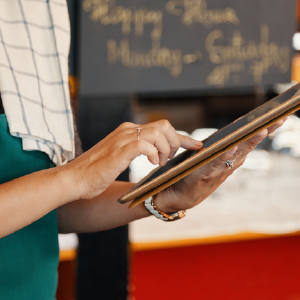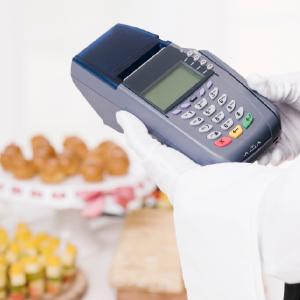As countries ease up on their quarantine lockdowns, business owners have also resumed their operations in a bid to return to normalcy. It seems that the “new normal” now prioritizes a safer working environment, with a sharp shift towards “digital” rather than physical interactions. People will still worry about going out and being exposed to public spaces, especially in restaurants and retail stores. Likewise, your staff also place themselves at great risk because they interact with customers, suppliers, fellow employees, and other people who are involved in your business.
In light of these risks, the World Health Organization (WHO) released preliminary guidelines for employers, with a strong emphasis on promoting safety and improving hygiene in the workplace. These guidelines are meant to reduce the negative impact of the COVID-19 pandemic on workers and their families, while also strengthening social protection. As hospitality businesses have always considered the safety and comfort of their customers to take precedence over their own, we will now focus on how you can ensure the safety and well-being of your staff through means that reduce physical contact. Please take note that this blog will not go through the entire WHO operational safety guidelines.
The Inevitable Shift in Focus
Today’s call for business transactions is also a call to move towards alternatives that require the use of current or emerging technologies. To minimize physical interactions, each form of technology within your business, should help you to do tasks that one or more of your employees were previously assigned to. For restaurants and retail stores, this helps in streamlining your workflow and being able to manage a lesser number of employees on-site. This is more of a question whether your business can support spending for critical technological investments under the current circumstances and keeping your staff roster intact while you’re at it.
Before you put in your precious earnings into a technology solution, you should have a robust marketing strategy in place at the onset. You cannot go all out and expect your new systems will do all the work for you. Automation can assist you in converting clients and taking in profit, but even with less staff, you will see the increase in responsibilities and technical knowledge necessary to operate your new tech. Keep in mind that your focus should be on solutions that can safeguard your employees’ safety.

Step Up Your Online Presence
Your website plays an important role in diverting traffic to your business. Back then, people would normally walk into your store to purchase goods and services. Now, they can and should only do virtual visits for engagement. Now, your website not only acts as a revenue stream but also as a safeguard against the risks of physical interaction.
With an online portal, you can put up the following services:
- Create a digital catalogue of your offerings
- Provide delivery services as well as take away options
- Open online and mobile communication channels such as chat and email marketing
- Hand out and collect surveys and reviews from your customers
- Integrate all these with your POS
You can also view, track, and control the entire customer experience if with the right processes and tools. You will also be able to create profiles for your customers which can store their history, preferences, and transaction records. Both your POS system and your marketing analytics solution are integral in maximizing the potentials of a fully integrated system.
You can try this out for free by signing up here.
Remember to publish your safety guidelines on your website and on all your social media pages. Emphasize the fact that you and your staff value your customers’ safety, as well as yours. Make sure to connect your social media accounts back to your website so as not to miss out on any opportunities.

Contactless Transactions
Cashless payments are necessary to minimize physical contact between your staff and your customers. Provide online payment options that can be made through mobile or online banking apps. For walk-in payments, credit and debit cards should also replace the need to exchange bills and for your customers to avoid having to crowd around or wait in line in front of a cashier.
As banks and third-party payment providers roll out integrations worldwide, the demand for both mobile and wearable payment devices have also intensified. Retailers have greatly benefited from the huge leaps in innovations involving digital stores, cloud computing, and in utilizing analytics, as these have increased their overall online presence. In the retail industry, nothing opens up more opportunities than being able to provide progressive services alongside comprehensive modes of payment.
Aside from putting up terminals by prominent card companies such as Mastercard and Visa, NFCs have also proliferated and have gotten more in demand as well. NFC (Near Field Communication), which allows your phone and an establishment to communicate wirelessly to close their business transactions, have gained a foothold in online payment options, due to its accessibility and convenience. They can be implemented quickly and easily, at low costs, competing with RFID options. Android Pay, Apple Pay, and Samsung Pay are the big names in the growing NFC industry.

Customer Service
If there’s one important element in the hospitality industry that can be compromised during these quarantine and lockdown periods, it’s maintaining acceptable customer service. While your customer-facing staff may not be able to completely fulfill their previous roles in being physically present to address your customers’ needs inside your store, there are still workarounds that can balance between securing their safety and being there for your customers.
- As your employees maintain safe social distances with your customers, put up signs that are easy to read from afar. This is to advise them about your no-contact policies. Display enough signage inside and outside your stores to emphasize how much your business values everyone’s safety while still being able to serve their needs.
- Suspend all plans of handing out flyers, brochures, and coupons. You can do all these digitally.
- Let your customers know that their feedback still matters. Set-up online surveys and review forms on your website and social media channels. Make it a point to promptly respond to each feedback, alongside the usual queries about your business.
Conclusion
Prioritizing your staff’s safety amid a compromised business climate is not an easy task for any business owner. You will also have to face difficult, unavoidable financial losses even with government stimulus and support. However, there is no greater loss than that of letting go of people you trust and have invested in. The survival of your hospitality and retail business also depends on your staff, which is why you have to ensure their health and well-being. Without trustworthy and competent employees, your effective marketing strategy, or even a new online platform that you recently purchased will all be for naught. They are all part of an effective, comprehensive reopening strategy in this new era in the hospitality industry.


